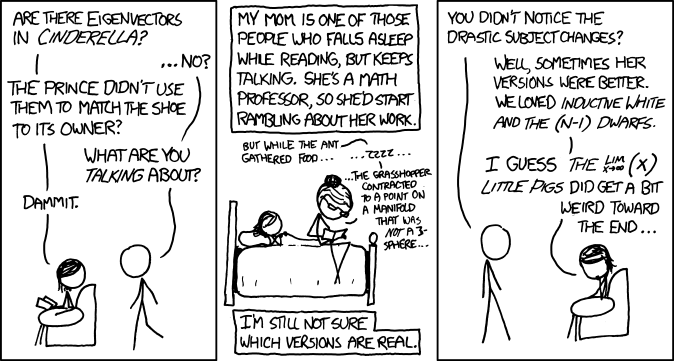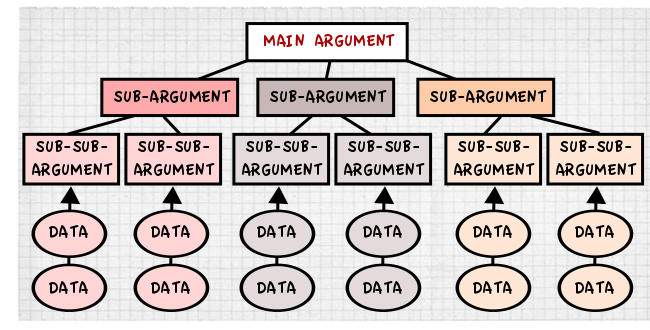No matter what your role is, communication plays an important part in your daily activities. As a data scientist, I realize that communication is an essential skill which is often overlooked. We might be too busy learning math, statistics and other stuff, and forget that we must be able to explain results of our findings to the stakeholders.
Writing this post doesn’t mean I am already perfect in my writings. In the beginning of my tenure, I tried to write reports as complete as possible. While complete sounds good, we shouldn’t spoil too much information about unnecessary stuff. It sounds obvious, but how do we decide whether something is necessary to tell or not? This post covers some writing tips which are mostly covered in [1] and [3]. Although this post focuses on written communication, most tips are also applicable in other communication forms.
Determine your target audience
Before you start writing, determine who your target audience is. It means you decide what kind of person you hope would read it, instead of imagining what kind of person would read your writing. There is nothing wrong if you go with the latter approach, though. The difference is who takes the lead: you or your audience. In the first approach, you will structure your writing based on your own plot. By the word plot,I mean you are in charge of fulfilling the message of your writing. On the other hand, if you take the second one, your writing will be structured based on how your audience grasp the idea. The two approaches might sound similar, but they aren’t. Imagine that you are an author of a book. Would you prefer to write stories that people like or write stories based on your own idea?

Create a memorable message
Based on [1], there are six characteristics which make a sticky idea - it is abbreviated as SUCCES.
1. Simple
Find the core of your idea, then strip it to its most critical essence. Imagine you are writing a lead on a newspaper: how can you deliver the message simply, so that people don’t have to read the whole passage but still understand the core message?
2. Unexpected
The first problem in communication is getting people’s attention. To do so, you should break the pattern: figure out the counterintuitive part of your message, then create the gap. Give a sequence of clues until the core message is delivered. It is better to use sequential approach instead of dumping a stack of information in the beginning of your writing.
3. Concrete
If you have to tell an idea to people you don’t know, it is better to use concrete analogies. Find a universal language that everyone speaks fluently; it must be concrete.
“It’s easier to understand those tangible actions than to understand an abstract strategy statement—just as it’s easier to understand a fox dissing some grapes than an abstract commentary about the human psyche.”
4. Credible
Honesty and trustworthiness of the sources make a message credible, e.g. we trust our friends testimonials about a product, compared to the TV commercials. Statistics are also useful, although people tend to focus on the numbers instead of the relationships it illustrates.
5. Emotional
Give your audience a reason to care about your idea. There are some approaches to make people care:
- Use associations: form an association between something they don’t care and something they care.
- Appealing to their self-interest: position yourself as your individual audience, then tell things which are relatable to them.
- Appealing to identify: intangible things like equality, individualism, human rights, and self-esteem could be an important motivator to people.
6. Story
A key to make a sticky idea is delivering it as a story. Stories encourage a kind of mental simulation or reenactment on the part of the listener that burns the idea into the mind. There are three basic types of story:
- The challenge plot: a protagonist overcomes a formidable challenge and succeeds.
- The connection plot: story about people who develop a relationship that bridges a gap - about relationships with other people.
- The creativity plot: involves someone making a mental breakthrough, solving a long-standing puzzle, or attacking a problem in an innovative way.
Note that we don’t always need to apply all six principles to make a memorable message.
Use Pyramid structure
Pyramid principle was first introduced at McKinsey by Barbara Minto, and now is widely used all over the world. It emphasizes the importance of structured thinking and communication. By using Pyramid structure, we help readers to comprehend our way of thinking. There are two approaches to build the structure:
1. Top-down approach
It is easier to start at the top, then work down to the details. The steps are:
a. Fill in the top box: what subject are you discussing?
b. Determine the question: what question is going to be answered in this writing?
c. If you know the answer, write it.
d. Identify the situation.
e. Develop the complication: what happen in the situation, which could raise a question?
f. Recheck the question and answer: recheck question raised on (e). If it is different to the one you defined on (a), you might need to change it. Also make sure you don’t pick a wrong complication on (e).

The purpose of this approach is to make sure you know what question you are trying to answer. Once you have it, you should be able to continue the writing relatively easily.
2. Bottom-up approach
There might be frequent occassions when you find that you don’t have clear idea to determine the top part of the pyramid structure. When you are in this situation, it’s time to use bottom-up approach:
a. List all points you think you want to mention. You can categorize the points, e.g. into problems & solutions, to simplify the next process.
b. Work out relationships between them. There are some logical ways to order a set of ideas:
- deductive: major premise, minor premise, conclusion.
- structural: Asia, South East Asia, Indonesia.
- chronological: first, second, third.
- comparative: first most important, second most important, and so on.
c. Draw conclusions. Make sure each key point has supporting ideas behind them.
There are some ways to check if the structure is properly built:
- ideas at any level of the pyramid must always be summaries of the ideas grouped below them.
- ideas in each grouping must be similar kind of idea.
- ideas in each grouping must be logically ordered.
Conclusions
Combining structured thinking and sticky ideas are foundations of effective writing. Besides, proper planning and brainstorming should be done before you begin writing, even when you decide to follow bottom up approach. Aside from tips mentioned above, don’t forget to ask for review from your relatives after you finish writing. It is much more difficult to find mistakes in your own writing than others’, since we are prone to subjective validation.
References
[1] Chip Heath & Dan Heath - Made to Stick: Why some ideas survived and others die
[2] James Le - The 6 Principles to Make Your Ideas Stick
[3] Barbara Minto - The Minto Pyramid Principle: Logic in Writing, Thinking, & Problem Solving
